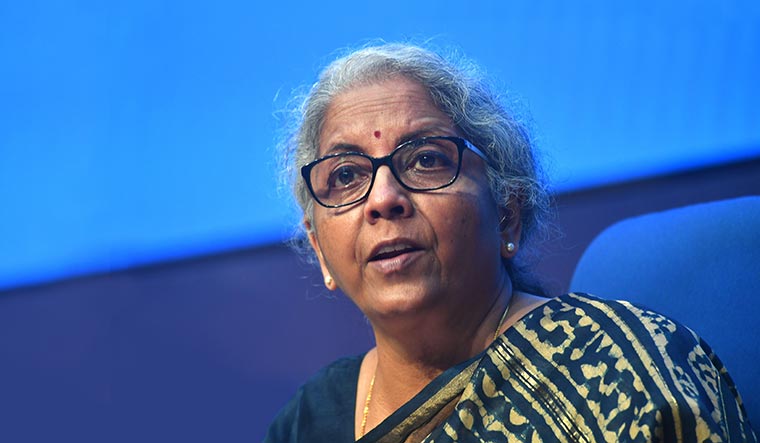As a parable, it is almost cute. A father who makes a promise to his children, while asking them to go out and make a life for themselves in the world out there. “I will be there whenever you need me,” he assures them.
But things do not pan out as expected. Trouble hits, the going gets tough, and the father does not live up to the promise. “Even the father was not equipped to handle it,” said Nikhil Gupta, chief economist at Motilal Oswal Financial Services, who loves using the example to describe the tussle between the Union government and states over tax revenues.
Beyond stories is the hard reality of the fiscal tug-of-war between the Centre and states. Fault lines and turf wars which were bubbling for decades have boiled over into a gloves-off spat, sparked off by the perilous state of state finances and the unravelling of the Goods and Services Tax (GST) formula.
The issues go much beyond the confrontation over compensation money. The original GST rollout assured that the Centre will ‘compensate’ states for anything less than 14 per cent growth in revenues from GST for a period of five years. It was done mainly to sweeten the deal and get states to agree to accede most of their tax streams into a unified central structure. However, a protracted economic slowdown, followed by a pandemic and lockdowns, saw the Centre not paying up the dues on time. With coffers drying up and with social and health spending rocketing, states were at their wits’ end.
Matters came to a head at GST Council meetings last year when Finance Minister Nirmala Sitharaman suggested a formula for states borrowing from the markets. Opposition states played hardball, adamant that it was the Centre’s job and that the compensation money was a promise that was to be kept. Sitharaman blinked and agreed to borrow the money, with a compensation cess to be charged over and above GST beyond the five year period (which ends in June 2022) and paid back to the states. “When the promise was made, nobody in their wildest dreams had any idea that a once-in-a-century event like this would happen,” said Gupta.
For a decision-making body that took pride in arriving at all decisions unanimously, the past few months have been less than pleasant for the GST Council. Many of the crucial decisions in the last four meetings, since the compensation issue blew up, were not unanimous. Many, in fact, came through after heated discussions, with state finance ministers distinctly grouped along party lines. In the last meeting, discussions got heated over slashing the tax on Covid drugs and vaccines. The meeting broke up without taking a call, leaving it to a group of ministers (GoM). The GoM recommended slashing of taxes on many Covid items, ranging from medicines and ambulances to even furnaces, most of which were accepted by the council.
But allegations flew thick and fast that Sitharaman had slyly composed the GoM with ‘yes’ ministers. There was none from Congress-ruled states. “FM treats the GoM as an extension of the NDA and its supporting parties. All (state) FMs who express a contrary view are treated as errant schoolboys,” sniped former finance minister P. Chidambaram.
The irony is delicious. As the chief minister of Gujarat, Narendra Modi was a champion of greater fiscal autonomy for states. After becoming prime minister in 2014, he replaced the Planning Commission with NITI Aayog, saying, “States…do not want to be mere appendages of the Centre.”
His government’s actions, however, spoke otherwise, particularly in its second term and loudly after the pandemic hit. The daily-changing dos and don’ts of the lockdown were micromanaged down to district levels by bureaucrats sitting in Delhi. Many Central schemes were left to states to implement, while the credit went to Modi and the BJP.
Getting states itchy has also been the increasing share of cess and surcharge in Centre’s tax revenue. They now account for 15 to 18 per cent of overall revenues. The catch? The Centre gets to keep all of it. “Increasing share of cess and surcharge in the gross tax revenue has reduced the size of the divisible pool,” said Suyash Tiwari and Saket Surya of PRS Legislative, in their paper ‘State of State Finances’.
Tamil Nadu’s finance minister P.T.R. Palanivel Thiagarajan recently suggested a rework of the ‘one state, one vote’ rule in the GST Council. States that contribute more, he argued, should get a proportionate representation in voting rights. The logic is simple—the concept of taxes being paid to the Centre and distributed between states has not worked the way it should have, that is to help weaker states prosper by doling out more to them. Instead, as pointed out by experts, the weaker states have become profligate. “The reason why (less well off) states like UP and Bihar could maintain their account surplus is that they get a lot more from the Centre,” said Sunil Kumar Sinha, principal economist at India Ratings and Research.
The compensation cess (to be paid to states) collection this financial year is expected to fall to Rs77,000 crore while the requirement could top Rs3 lakh crore. Additionally, Rs61,000 crore is pending to be released to states for dues from the lockdown period till January this year. “When you have national and sub-national governments, these issues are bound to crop up,” said Sinha. “It is a reality in this country.”


